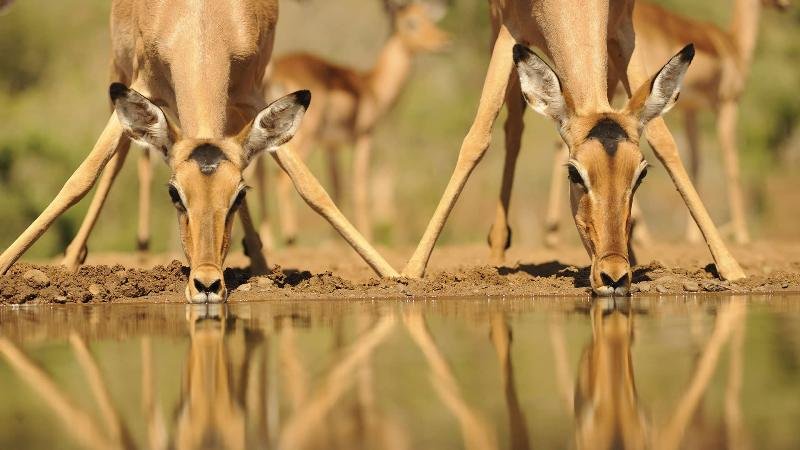
Experience Africa: An Adventurer’s Guide to Safari Vacations
Is this allure of Africa calling your name?
Many of us dream of visiting Africa to go on safari, seeing some of the world’s most beautiful wildlife in their natural habitat.
But it can be confusing to know where to go, what to do, and how it all works. If you’re eager to have an African experience, but don’t know how to get started, you’re in the right place.
Keep reading for an adventurer’s guide to planning safari vacations.
Where Should I Go For the Best Safari Vacations?
Africa is an incredibly vast continent, much larger than you might even realize. Although incredible wildlife and nature experiences can be found all over the continent, many first-time safari-goers tend to visit South or East Africa.
These areas offer unbelievably large national parks, perfect places for wildlife spotting, stunning natural beauty, and rich culture. To get you started, here are a few areas to consider.
The Maasai Mara, Kenya

Home to one of the oldest cultures in the world, the Massai Mara, in East Africa, is known for its animal migrations and diverse species, including many lions. Here’s where to stay in the Maasai Mara.
South Africa
South Africa is a perennial favorite. Explore the fascinating cities of Cape Town and Johannesburg before heading to the world-famous
Kruger National Park, one of the largest game reserves in Africa, famous for its leopard population.
There are also several malaria-free national parks in South Africa, a bonus for those worried about the disease (although it is easily prevented with medication).
Botswana
The spectacular Okavango Delta draws many people to Botswana. It’s a huge inland delta and home to hippos, crocodiles, and elephants, to name a few.
Other popular countries for safari include Namibia, Rwanda, Uganda, and Tanzania.
What Clothes Should I Pack?
Packing can be tricky, as weather can vary greatly by season or location.
However, on safari, the best times to see animals are when they are most active, which is dawn and dusk. Most safari tours will operate at these times.
Mornings especially before sunrise can be very cold, but will quickly heat up once the sun rises. Therefore, it’s good to dress in layers.
Lightweight trousers, a windbreaker or fleece, a t-shirt or tank top, and comfortable walking shoes will all come in handy.
You don’t need to dress in camouflage, but you will find lighter colors will keep you cooler than dark, and also attract fewer flies.
Don’t forget a hat, sunglasses, and a lightweight scarf, useful for keeping dust away from your mouth and eyes.
What else?
In the heat of the day, you might relax by the swimming pool, so bring along your swimsuit and a good book. Casual clothes are usually fine for evening meals— the general rule on safaris is that comfort and function are much more important than style.
Of course, one of the best things about safaris is wildlife photography, so bring a good camera. Your smartphone camera might not cut it though, as often animals are spotted from quite a long distance.
The best zoom lens you can afford to buy, or even rent, is essential if you want to try your hand at serious wildlife photography.
Which Animals Will I See?

One of the most thrilling experiences on safari is seeing your favorite animal in the wild for the first time. While animal sightings will vary based on seasons, locations, and even time of day, you’ll want to keep an eye out for the Big 5.
What are the Big 5? Considered Africa’s most iconic large animals, the Big 5 consists of elephants, leopards, lions, African buffalo, and rhino. Keep your eyes peeled for the majestic creatures, who are unfortunately also targets of poachers.
If you can, support local conservation efforts to help protect Africa’s unique and often endangered populations.
Also, you may see cheetahs, zebras, wildebeests, Springbok, other gazelles, antelope, warthogs, chimpanzees, and hyenas. The birdlife is also spectacular, and you’re likely to also see some larger than life insects, especially at night!
Self-Drive vs Guided African Safari Tours
On safaris, you can generally either drive yourself around in your vehicle or drive around on a guided tour. Both are good options, but there are pros and cons to both.
Self-Drive
This is the most affordable way to go on safari, as you’re using your car. You’ll enjoy the comfort of air conditioning and heat as well.
However, make sure you have a good map and are confident driving on rough, unpaved roads. You’ll also be seeing the animals through your window glass, rather than in open air.
No matter what, always stay in your car at all times except in designated safe areas.
Guided Tours
Guided tours will be more expensive, as you pay per person per tour, with tips expected as well. But, a guided tour gives you the most quintessential safari experience, as your ride around in an open-air truck, designed for wildlife viewing.
Your guide is an expert wildlife spotter and can provide information and background on each animal you see. It will also usually include a sundowner, or sunset drinks and nibbles, or lunch.
Most tours will depart before breakfast or late afternoon, before dinner.
Despite the added cost, booking a guided tour is the best way to make the most of your safari experience. But, if you are visiting a national park for several days, you can mix it up and try both.
Book Your Safari Trip Today
Ready for an African adventure? Now that you know a bit more about safari vacations, book the trip of a lifetime for you and your family.
The joy of seeing giraffe, lions, and elephants on the mighty African savannah is sure to become your most treasured travel memory, and you may find yourself longing to return.
Did you find this travel article useful? If so, please read through some of our other content.




